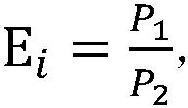A recommendation method for financial aid for poor students based on multidimensional analysis of school behavior data
A multi-dimensional analysis and recommendation method technology, applied in the field of big data analysis, can solve problems such as unsatisfactory classification results, waste of data resources, cumbersome funding work, etc., and achieve high accuracy of recommendation results, small data volume requirements, and accurate information acquisition Effect
- Summary
- Abstract
- Description
- Claims
- Application Information
AI Technical Summary
Problems solved by technology
Method used
Image
Examples
Embodiment Construction
[0083] In order to have a further understanding and understanding of the structural features of the present invention and the achieved effects, the preferred embodiments and accompanying drawings are used for a detailed description, as follows:
[0084] Such as figure 1 As shown, the method for recommending financial aid for poor students based on multidimensional analysis of school behavior data in the present invention includes the following steps:
[0085] The first step is the acquisition of historical behavior data. Obtain historical behavior data of past students in multiple dimensions. Historical behavior data includes past students' family economic data, campus card consumption data, student performance data, and library borrowing data. For learning and living conditions, since the establishment of the recommendation model in the present invention is based on the characteristics extracted from behavioral data for construction training, the accurate selection of basic ...
PUM
 Login to View More
Login to View More Abstract
Description
Claims
Application Information
 Login to View More
Login to View More - R&D
- Intellectual Property
- Life Sciences
- Materials
- Tech Scout
- Unparalleled Data Quality
- Higher Quality Content
- 60% Fewer Hallucinations
Browse by: Latest US Patents, China's latest patents, Technical Efficacy Thesaurus, Application Domain, Technology Topic, Popular Technical Reports.
© 2025 PatSnap. All rights reserved.Legal|Privacy policy|Modern Slavery Act Transparency Statement|Sitemap|About US| Contact US: help@patsnap.com



